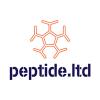This is PERFECT! Thank you. My next question would be dosing. If I were to get the supplements listed, would I take them daily without a break? Do you suggest splitting them up into cycles? Or just going supplement free a couple days a week?
Jreinhal,
I'm glad you found the answer satisfactory...
As far as cycling, I am currently considering this. I am loosely following Jim Green's example of telomerase activation. He is on a two, two week cycle. You can read his thoughts here. Go to the middle of the page to read his 2013 regimen.
I will definitely narrow down my choices but this isn't the kind of thing I want to rush. I am fairly used to taking risks but I like to think I make educated choices which means I only add things when something has clicked and it REALLY makes sense to me. I have also started an off-site blog where I congeal allot of my thinking. It's a fluid instrument for me and will always be in state of change. You might get more insight into my methodologies there.
There are allot of very knowledgeable people here on Longecity. Most of them can dance a dirge over my ideas and methodology. When it comes down to it you have to be the one who decides which direction is good for you. Thanks for bringing your attention to this thread. If anything it will be a good springboard for your own exploration. Please comment and add to the knowledge base as we move forward. I welcome constructive discussions.

















































